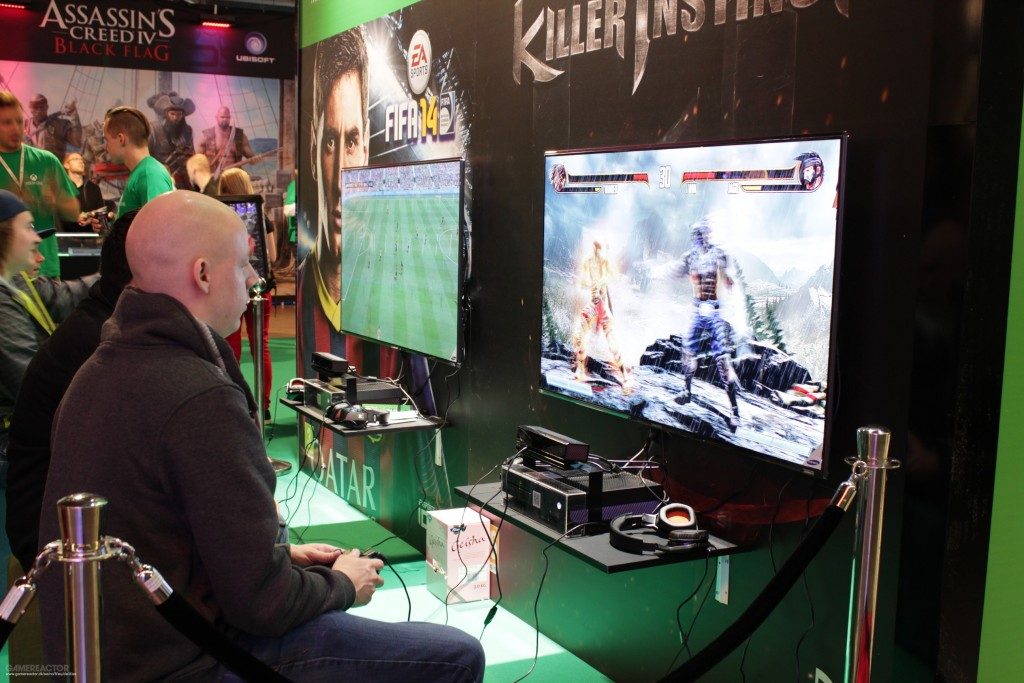
How the hi-tech race hindered game design
By Adam Tatelman, Staff Writer
Aside from improvements in graphics quality, the current console generation—PS4, Wii U, Xbox One—hasn’t seen any technological innovation in comparison to the last generation. In fact, these new consoles lack features that their predecessors had, such as the PS3’s in-game music player. I’m not saying that new hardware should only be developed for innovation’s sake, since that can lead to gimmicky nonsense like the Virtual Boy. But almost any current-gen game is functionally identical to its last-gen counterparts. Without their more detailed graphics engines, they could easily be playable on last-gen hardware.
This calls into question the need for new consoles. Yes, we are able to create more and more detailed games with greater explorable surface area than ever before, but that’s all they are: surface. Historically, higher graphical fidelity has always come at the expense of gameplay complexity. Consider the Fallout series: over time, the RPG mechanics have slowly eroded to the point where initial skill specialization no longer exists, replaced instead in Fallout 4 by a clunky perk-per-level system that starts every character at factory zero for every skill. But at least it’s prettier than the last game.
However, I want to go beyond the typical “gameplay over graphics” argument. Even the biggest triple-A project is subject to limitations: time, budget, and disk space. In order to make the best game they can, the developers must choose to put their resources into the right areas, in order to achieve a specific vision. Resources are wasted if they try to throw too many ideas into the same project merely for mass appeal’s sake. That way, you get an unfocused game that does many things poorly, as opposed to a focused effort that does a few things exceptionally well.
Think of it this way: if you’re rolling a basic Knight character, you’ll put your points into combat skills—not stealth or magic. You’ve got to think about what skills you’re training and how they affect the build as a whole. Unfortunately, game developers today do not seem to think this way. They merely adopt popular concepts and throw them together on a whim. Think of Freeflow Combat; once Batman: Arkham Asylum invented this fast-paced strike-and-counter combat system, how long was it before every other third-person action game aped the concept?
Triple-A is a status conferred upon a game from its inception, not dependent on its quality or polish but rather on how many well-worn game mechanics it can hybridize into a saleable product of familiar concepts. Free-roam? Gotta have that. Mini-map? Throw it in. Collectables and sidequests? Check. Simplified RPG elements? Oh, yeah. Crafting system? Right on. We have reached a vanishing point where there aren’t any unique games because we take for granted that every possible game concept can be properly expressed through the same combination of common mechanics.
In the words of Superman’s nemesis Lex Luthor: “I would rather fail spectacularly than succeed minimally.” It’s a pretty gung-ho attitude, but I think it’s exactly what the game industry needs right now. Unfortunately, those who are willing to take risks don’t seem to get hired because the most successful business model at the moment is to follow trends, not set them. The seeds of brilliant ideas have been buried somewhere in the development dust bowl of modern game design. It’s up to us to find them and nourish them in the hopes that one day they might bear fruit.
These corporate decisions aren’t made from a compositional or artistic perspective. As long as a formula remains profitable, there isn’t any reason to change it. I accept that. But that doesn’t mean we shouldn’t discuss the possibilities of game design, reminisce on great moments of the past, and postulate their place in the future.

